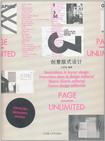创意版式设计
出版时间:2011-8 出版社:大连理工大学出版社 作者:王绍强 页数:255
Tag标签:无
内容概要
hen we read, what inspires us most may not be the absorbing content or beautiful pictures, butrather the eye-catching layout and design of the print materials.The function of the layout is to communicate. How can we go about organising information in sucha way as to make it not only more readable and legible, but also more exciting and appealing toreaders? Designers must take into account myriad issues in order to find a proper balance betweenthe content and their visions. Even before a designer starts to design, a layout designer has todecide the format, proportion, grid, typefaces and take into consideration many complex problemsthat might arise in relation to the design of a book or magazine.Ideally, the first step is to decide the size and proportion. Most of the time, this step is alreadydecided beforehand, and designers are not involved in the process and unable to undo it. Certainstandard formats are most likely to be used in order to cut costs, but there is no magic formula as tothe best solution. The Fibonacci series or golden ratio proportion may be a good hint to get the ballrolling. We could decide the size and proportion basedon the purpose of the book, catalogue,and magazine and how they are to be handled.The next step would be designing the grid system. Grids seem very harmless and simple but at thesame time, they may well be the hardest part of designing the layout. It may take a day or two justto design the grid. In designing the grid, one needs to consider the proportion of the pictures andthe length of the text. Most of the time, if the grid has been set before the materials, the text andpictures will end up not fitting the grid: a situation that should be avoided.With the aid of computer software, creating layout has never been easier, but sadly manyunprofessional "designers" fail to make use of such resources. Without the fundamental oftypography, it would be impossible to make a beautiful and timeless layout. TypographX is the artof arranging, composing and designing the letterform as a display or text so that it is efficient andenjoyable to read.What does it take to make a beautiful layout? Is it the typefaces chosen, the size of the book orthe pictures themselves? When designing a book, every little matter has to be pored over fromall angles. How do you normally evaluate a chef? Who's the better practitioner: the chef whocan make good food out of ordinary ingredients or the one who can make a great meal usingthe freshest materials? The same quandary applies to designers. The better the choice of size,typefaces, and materials used, the better the end result will be. As time constraints are decisive,most designers often overlook the micro-aesthetic in the design. However, the micro-aesthetic makesa clear distinction between good and excellent. Most people will not be consciously aware of theseelements, but generally, they can feel them.There are several styles and solutions in design, with no hard and fast rule to fall back on.However, first and foremost, designers must be able to identify the most appropriate steps toovercome specific problems. Once these have been solved, only then can a designer set aboutrefining the design to make it more exciting.
书籍目录
FOREWORD
BOOKS
MAGAZINES
POSTERS
INDEX
ACKNOWLEDGEMENTS
图书封面
图书标签Tags
无
评论、评分、阅读与下载
用户评论 (总计1条)
- 创意版式设计(景观与建筑设计系列)非常好
